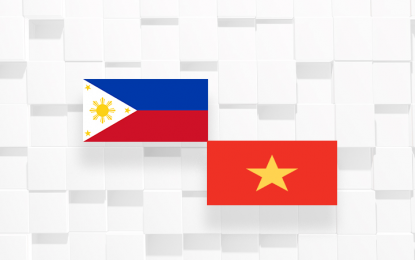
MANILA – The Philippines is eyeing the expansion of its bilateral trade with Vietnam to USD10 billion (about PHP563.38 billion) from the current USD7 billion, President Ferdinand R. Marcos Jr. said Tuesday.
Marcos made the statement during his separate meetings with Vietnamese President Vo Van Thuong and Vietnamese Prime Minister Pham Minh Chinh at the Presidential Palace in Hanoi.
“The Philippines is committed to enhancing and fortifying our economic, trade, and investment ties with Vietnam. Our objective is to expand our bilateral trade which stands at just about USD7 billion today, to expand that to USD10 billion by exploring untapped resources,” Marcos told Chinh.
In another meeting with Thuong, Marcos said there are “countless” options that may be explored, including business opportunities, technology exchange, capacity building, and project collaboration on biomass and waste-to-energy, geothermal, and offshore wind industry.
He said the micro, small, and medium-scale enterprises (MSMEs) may also be tapped, considering that they constitute the “very large majority of the businesses” in the Philippines and other Association of Southeast Asian Nation (ASEAN) member states.
Marcos said Philippines is ready to work with Vietnam in streamlining the trade and investments procedures and requirements, minimizing trade barriers, and fostering a transparent and predictable business environment that encourages “fair competition and mutual growth and development.”
“We hope to capitalize on our countries’ ratification of the RCEP (Regional Comprehensive Economic Partnership) to maintain the upward trend in our trade,” he said.
Reliable partner in digital transformation
Marcos said the Philippines also wants to be Vietnam’s “reliable partner” in digital transformation, citing the country’s readiness to adapt to new technology given its “future-ready” Filipino work force.
He hoped that Manila and Hanoi would collaborate in maximizing the use of technology and developing their infrastructure for digital transformation, to spur economic growth in the two countries and address cyber security threats.
“There is another side to the development of the digital economy and the digital space and that is security, and not only in terms of defense, security of our militaries, but also security for our people who have fallen victims to some of the more sinister hacking and scanning that does occur over the digital space, and I hope that we can explore further ways so that we can cooperate to avoid and to mitigate this new found problem,” he said.
Marcos noted that the government has created the Philippines Science, Technology, and Innovation-driven Industrial Strategy for 2022–2028 and the E-commerce Philippines 2022 Roadmap to drive the Philippines’ Digital Economy to hit the gross merchandise in value of over USD100 billion by 2030.
He also trumpeted that in the 2022 annual e-Conomy Southeast Asia report, the Philippines was considered as “one of the fastest growing digital economies” among major ASEAN members and is expected that its gross-merchandise value of USD22 billion in the same year will grow to US35 billion in 2025.”
“The emergence of information and communications technology gave rise to fresh business models and groundbreaking products and services, notably through the growth of e-commerce and digital payment system,” he said.
Positive economic outlook
Marcos also touted the Philippines’ “positive” economic outlook, adding that foreign investors may take advantage of the government’s policy reforms and initiatives to create a conducive business environment.
He noted that the country’s economy grew by 5.9 percent in the third quarter of 2023, making the Philippines “one of the stronger major economies in Asia.”
“Furthermore, our ratings, the Fitch Rating affirmed the Philippines’ ‘BBB’ rating, which is a notch above the minimum investment grade, and has kept the outlook as stable, citing the Philippines' strong medium-term growth prospects and declining government debt to GDP (gross domestic product) ratio,” Marcos said.
“This reflects the Philippine government’s efforts to implement structural economic reforms, including the enactment of the Public-Private Partnership Code last December, which will streamline the PPP processes and eventually address the Philippines' large infrastructure gaps,” he added. (PNA)
